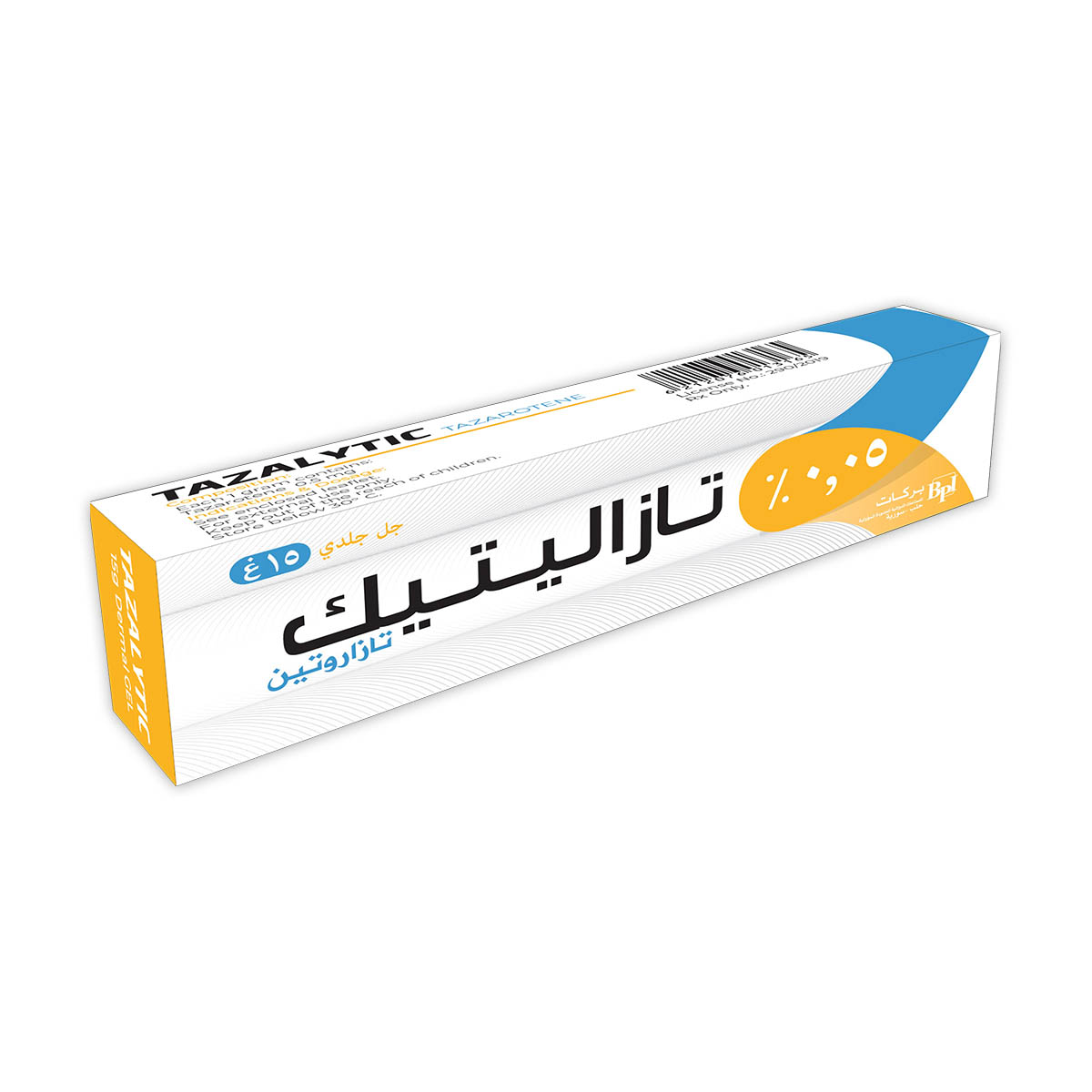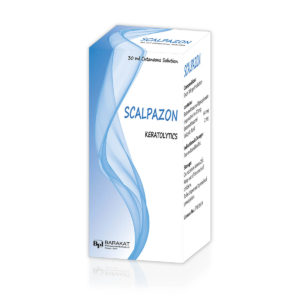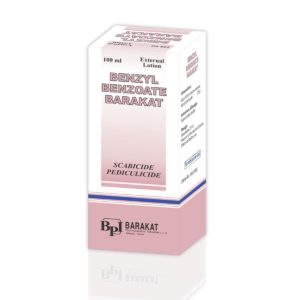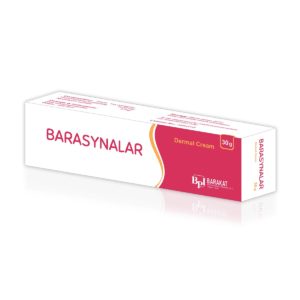Description
Clinical Pharmacology:
Tazarotene is a retinoid prodrug which is converted to its active form.
Psoriasis: Topical tazarotene blocks induction of epidermal ornithine decarboxylase activity, which is associated with cell profileration and hyperplasia. Tazarotene suppresses expression of MRP8, a marker of inflammation present in the epidermis of psoriasis patients at high levels. It inhibits cornified envelope formation. Tazarotene also induces the expression of a gene which may be a growth suppressor in human heratinocytes and which may inhibit epidermal hyperproliferation in treated plaques.
Acne: The basis of tazarotene’s therapeutic effect in acne may be due to its antihyperproliferative, normalizing-of-differentiation and anti-inflammatory effects. It inhibits corneocyte accumulation and cross-linked envelope formation.
Pharmacokinetics:
Following topical application, tazarotene undergoes esterase hydrolysis to form its active metabolite-acid. Tazarotene is highly bound to plasma proteins (greater than 99%). Tazarotene and tazarotenic acid are eliminated through urinary and fecal pathways. The half -life of tazarotene is 18 hours following topical application of tazarotene to normal acne or psoriatic skin. The Cmax for tazarotenic acid occurring 9 hours after the last dose.
Indications:
Tazarotene Gel 0.05% and 0.1% are indicated for the topical treatment of patients with stable plaque psoriasis up to 20% bodysurface area involvement.
Tazarotene Gel 0.1% is also indicated for the topical treatment of patients with facial acne vulgaris of mild to moderate severity.
Contraindications:
Retinoid may cause fetal harm when administered to a pregnant woman. Tazalytic Gel is contraindicated in women who are or may become pregnant. It is contraindicated in individuals who have shown hypersensitivity to any of its components.
Warnings:
Pregnancy category: X
Women of child-bearing potential should be warned of the potential risk and use adequate birth-control measures when Tazalytic Gel is used.
Precautions:
Tazarotene Gel should be applied only to the affected areas. Avoid contact with eyes, eyelids or mouth. The safety of its use over more than 20% of body surface area has been established in psoriasis or acne.
Retinoid should not be used on eczematous skin, as they may cause irritation. Exposure to sunlight (including sunlamps) should be avoided unless deemed medically necessary, and in such cases, exposure should be minimized during the use of Tazalytic Gel. Patients with sunburn should be advised not to use Tazalytic gel until fully recovered. It should be administered with caution to patients taking photo sensitizers (e.g., thiazides, tetracyclines, fluoroquinolones, phenothiazines, sulfonamides), because of the increased possibility of augmented photo sensitivity. Some individuals may experience excessive pruritus, burning, skin redness or peeling. If these effects occur, the medication should either be discontinued until the integrity of the skin is restored, or the dosing should be reduced to an interval the patient can tolerate.
Weather extremes, such as winds or cold, may be more irritating to patients using Tazalytic gel.
Drug Interactions:
Concomitant dermatologic medications and cosmetics that have a strong drying effect should be avoided. Concomitant use of tazarotene did not affect the pharmacokinetics of norethindrone and ethinylestradiol over a complete cycle.
Adverse Effects:
Tazalytic 0.05% and 0.1% gel did not induce allergic contact sensitization, phototoxicity or photoallergy.
Psoriasis: The most frequent adverse events are: pruritus, burning/stinging, erythema, worsening of psoriasis, irritation, skin pain, rash, desquamation, irritant contact dermatitis, skin inflammation, fissuring, bleeding, and dry skin.
Acne: The most frequent adverse events are: desquamation, burning/stinging, dry skin, erythema and pruritus, irritation, skin pain, fissuring, localized edema and skin discoloration.
The following adverse reactions have been identified during post marketing use of Tazalytic gel 0.05% and 0.1% including blister, rash, skin discoloration and pain.
Pregnancy:
Teratogenic Effects: Pregnancy Category X
Women of child-bearing potential should use adequate birth-control measures when Tazalytic Gel is used.
Although there may be less systemic exposure in the treatment of acne of the face alone due to less surface area for application, tazarotene is a teratogenic substance, and it is not known what level of exposure is required for teratogenicity in human.
Nursing Mothers:
It is not known whether this drug is excreted in human milk. Caution should be exercised when tazarotene is administered to a nursing woman.
Overdosage:
Excessive topical use of Tazalytic Gel may lead to marked redness, peeling, or discomfort. Oral ingestion of the drug may lead to the same adverse effects as those associated with excessive oral intake of Vitamin A (hypervitaminosis A) or other retinoids. If oral ingestion occurs, the patient should be monitored, and appropriate supportive measures should be administered as necessary.
Dosage and Administration:
For psoriasis:
It is recommended that treatment start with Tazalytic gel 0.05% with strength increased to 0.1% if tolerated and medically indicated. It is applied once a day in the evening to psoriatic lesions, using enough (2 mg/cm2) to cover only the lesion with a thin film to no more than 20% of body surface area. If a bath or shower is taken prior to application, the skin should be dry before applying the gel.
If emollients are used, they should be applied at least an hour before application of Tazalytic gel. Unaffected skin should be avoided carefully.
For Acne:
Face should be cleansed gently, and after the skin is dry, a thin film of Tazalytic gel 0.1% (2 mg/cm2) should be applied once a day, in the evening to the skin where acne lesion appears. Enough quantity should be used to cover affected area.
Pediatric Use:
The safety and efficacy of tazarotene have not been established in pediatric patients under the age of 12 years.
Geriatric Use:
Subjects over 65 years of age experienced more adverse events and lower treatment success rates after 12 weeks of use of Tazalytic Gel compared with those 65 years of age and younger.
How Supplied:
Tazalytic 0.05%, 0.1% Gel: Carton box containing 1 aluminum tube of 15 gr or 60 gr.
Storage Conditions:
Store the products below 30°C.







